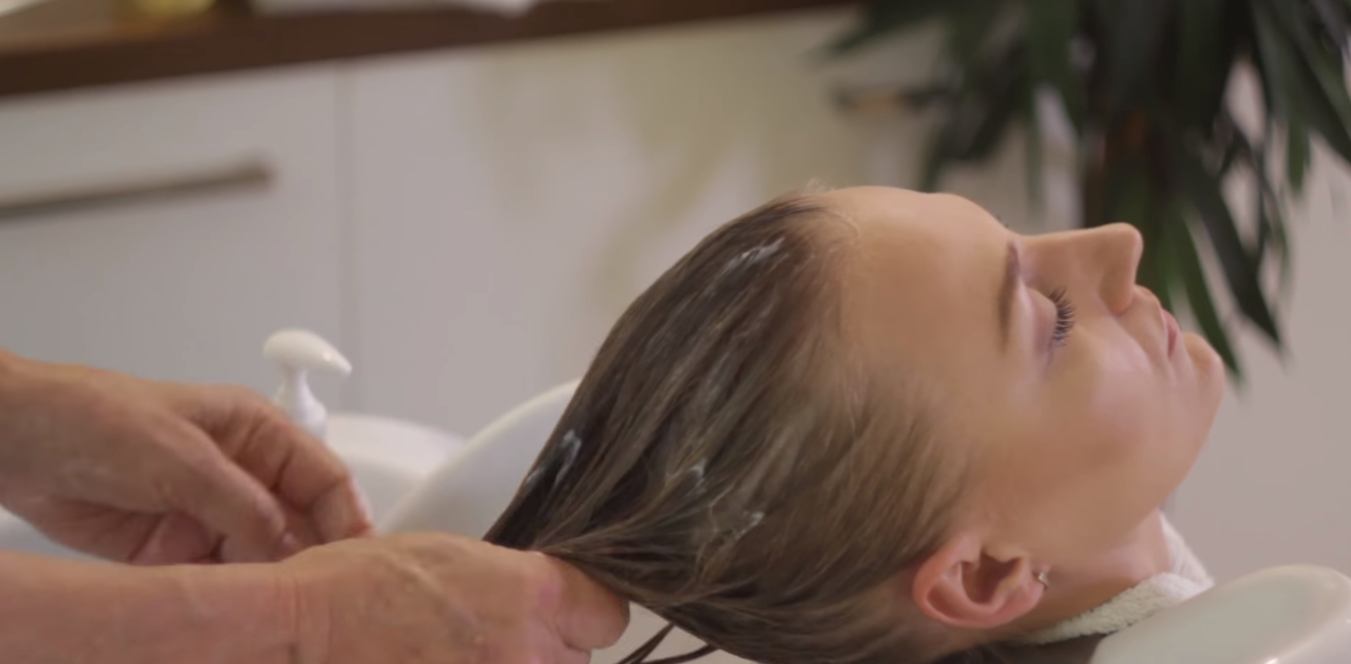In the pursuit of luscious locks, hair conditioning has become an integral part of our grooming routine. From moisturizing and smoothening to detangling, conditioning plays a crucial role in maintaining healthy hair. However, like any good thing, too much of it can lead to problems.
Over-conditioning, a common yet often overlooked issue, can result in limp, greasy, and lifeless hair. Understanding the signs and learning how to fix over-conditioned hair is essential for maintaining a balance between nourishment and manageability.
Hair conditioning is not merely a cosmetic indulgence; it is a therapeutic treatment for your tresses. The primary purpose of a conditioner is to replenish moisture lost during washing, styling, and environmental exposure.
Conditioners contain a mix of emollients, humectants, and proteins that work together to hydrate, smoothen, and protect the hair shaft. Emollients like oils and butters provide a protective coating, humectants like glycerin attract and retain moisture, and proteins strengthen the hair structure. Regular conditioning not only enhances the texture of your hair but also guards against damage, making it more manageable and vibrant.
What Is Over-Conditioning and the Cons of Over-Conditioned Hair:
While conditioning is undeniably beneficial, too much of a good thing can lead to over-conditioning. Over-conditioned hair is a state where the hair shaft becomes excessively saturated with moisture, causing it to become limp, greasy, and unmanageable. The cons of over-conditioned hair are multifaceted.
- Firstly, the excess moisture can weigh down the hair, resulting in a lack of volume and bounce.
- Secondly, it can lead to an imbalance in the scalp's natural oil production, making the hair appear greasier than usual.
Additionally, over-conditioning may diminish the effectiveness of other hair care products, as the hair shaft is already saturated with moisture.
Signs of Over-Conditioned Hair:

Frustrated strands: Over-Conditioned Hair can appear limp and lifeless.
Recognizing the signs of over-conditioned hair is crucial for addressing the issue promptly. Some common indicators include:
- Limpness: Over-conditioned hair tends to lose its natural volume and elasticity, appearing flat and lifeless.
- Greasy Texture: Excessive moisture can make the hair feel greasy, even shortly after washing.
- Difficulty Styling: Over-conditioned hair may be challenging to style, lacking the necessary structure and hold.
- Product Buildup: Residue from over-conditioning can accumulate on the hair, causing it to feel heavy and weighed down.
- Loss of Curl Definition: For those with curly hair, over-conditioning can lead to a loss of curl definition and a wavy or straight appearance.
How To Properly Condition Your Hair:

Revitalize your locks with these expert tips on how to properly condition your hair for a luscious and healthy mane!
To avoid the pitfalls of over-conditioning, it's essential to follow a proper hair conditioning routine. Here are some guidelines to ensure you strike the right balance:
- Choose the Right Conditioner: Select a conditioner that suits your hair type and concerns. If you have fine hair, opt for a lightweight formula, while those with thick or curly hair may benefit from a more intense moisturizing conditioner.
- Focus on the Ends: Apply conditioner primarily to the mid-lengths and ends of your hair, as these areas are more prone to dryness and damage. Avoid the scalp, especially if you have an oily scalp, to prevent excess buildup.
- Adjust Frequency: The frequency of conditioning depends on your hair type and needs. While some may benefit from daily conditioning, others may find that a few times a week is sufficient. Experiment to find the right balance for your hair.
- Rinse Thoroughly: Ensure that you rinse the conditioner out thoroughly during the washing process. Leaving residue behind can contribute to over-conditioning.
- Consider Deep Conditioning: Integrate deep conditioning treatments into your routine once a week or as needed. These treatments provide an extra boost of moisture without the risk of over-conditioning if used sparingly.
How To Fix Over-Conditioned Hair:

Undo the damage: Discover the secrets to fixing over-conditioned hair and restoring its natural beauty.
If you've identified the signs of over-conditioned hair, don't panic. There are several steps you can take to restore balance and revive your locks:
- Clarifying Shampoo: Use a clarifying shampoo to remove excess product buildup and restore your hair's natural balance. These shampoos are formulated to deep-clean the hair, eliminating residues that may contribute to over-conditioning.
- Skip Conditioner Temporarily: Give your hair a break from conditioning for a few washes. This allows your hair to regain its natural texture and reduces the risk of further over-conditioning.
- Adjust Your Conditioning Routine: Reassess your conditioning routine and make necessary adjustments. If you've been over-conditioning, reduce the frequency or choose a lighter formula.
- Use a Protein Treatment: Incorporate a protein treatment into your routine to strengthen the hair shaft. This helps counteract the softening effects of over-conditioning.
- Avoid Hot Water: Wash your hair with lukewarm or cool water instead of hot water. Hot water can open the hair cuticles excessively, making the hair more prone to over-absorbing moisture.
- Blot Excess Water: After washing your hair, gently blot excess water with a towel instead of vigorously rubbing. This minimizes the risk of disturbing the hair cuticle and causing frizz.
- Natural Remedies: Consider natural remedies like apple cider vinegar rinses or aloe vera gel to restore the pH balance of your hair and provide lightweight moisture.
Conclusion:
Hair conditioning is a double-edged sword. While it offers numerous benefits, overindulgence can lead to over-conditioned hair, resulting in a lackluster appearance. Recognizing the signs of over-conditioning and implementing corrective measures is crucial for maintaining a healthy balance.
By following proper conditioning techniques, choosing the right products, and making necessary adjustments when needed, you can ensure that your hair remains nourished, manageable, and radiant. Striking the right balance in your hair care routine will leave you with the beautiful, healthy locks you desire.